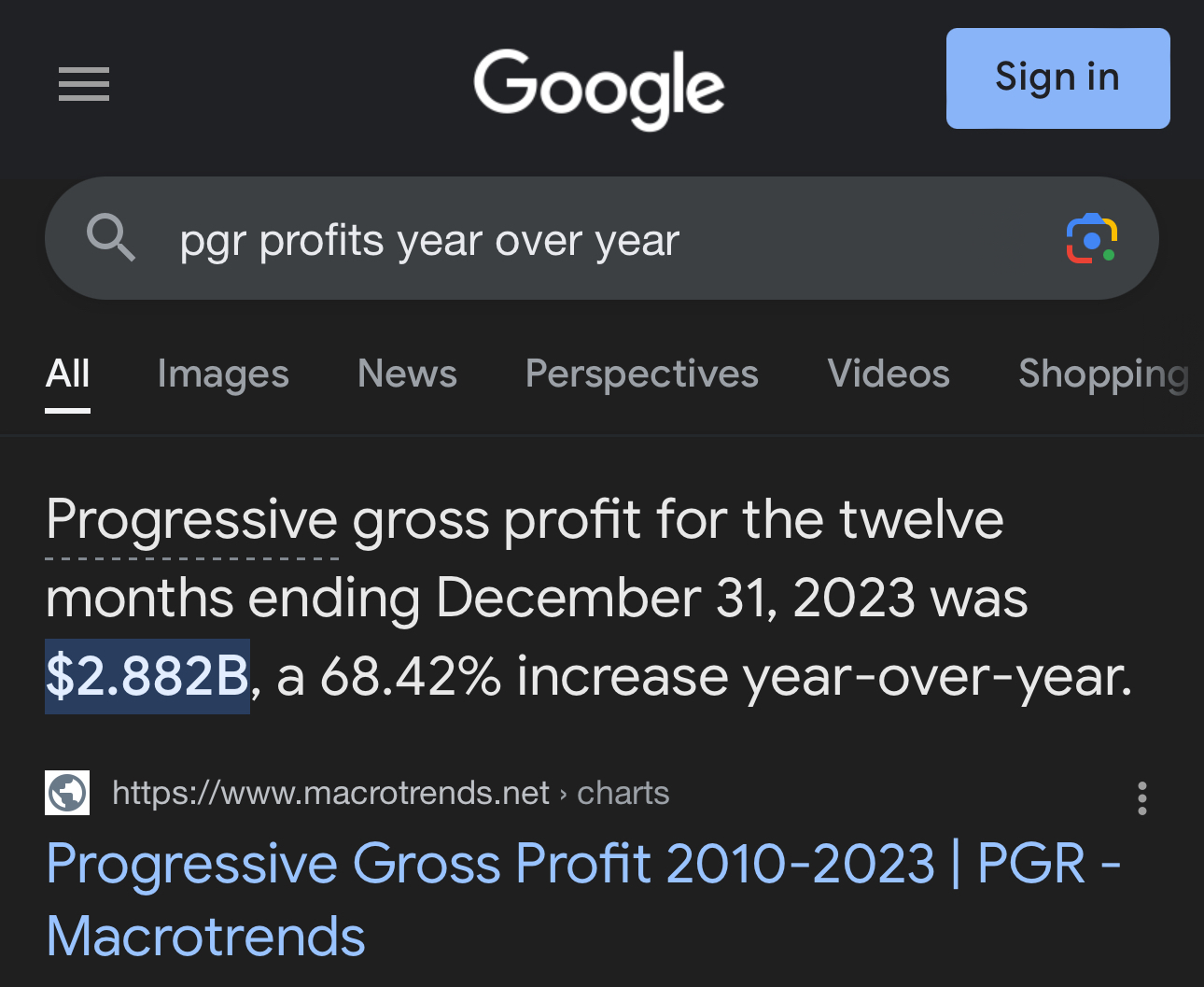Car insurance rates are surging as Americans struggle to pay for basic necessities and ongoing debt.
The newest Consumer Price Index shows car insurance spiked 20 percent year over year. The surge in pricing occurred after years of gradual price inflation, with earlier reports finding the rates grew by 36 percent since 2020.
That’s at the same time debt is soaring for many Americans. While Americans hold around 1.75 trillion in student debt loans alone, they also have $1.05 trillion in credit card balances not paid off.
deleted by creator
And also insurance companies charging just as much as they can get away with.
The US system is designed to squeeze every last penny out of a person, to the point they can still “survive,” but not so much that they become destitute and can no longer buy things and pay for essential services.
deleted by creator
The way the market works: You charge a competitive price that allows you to cover your costs and make a profit. If your product provides enough value to the buyer, they’ll pay for it.
That’s what’s taught. There’s quite a bit more in practice, including: what insurance companies learned from management consultants.
But they aren’t colluding to eek every ounce of money from people.
Maybe so, though there appears to be a common interest.
There is competition here, though. It’s not like it’s a single insurance company monopoly. You can usually get a better deal by shopping around.
It’s kind of funny you mention this. I just sat down and went through every insurance company I could find (over 15 of them) that are still writing policies here in CA because Geico decided to jack my rates over 20% this renewal. Literally every one of them were within $5 every 6 months of the price Geico is charging me for the renewal.
Tell me again how I’m supposed to “get a better deal by shopping around”?
Oh he has no clue. He just parroted the propaganda he received in middle school.
- People insist on driving larger cars, creating more severe accidents.
- People insist on driving more expensive cars, driving up replacement and repair costs.
- People insist on outlawing speed cameras and red light cameras, driving up accident rates and severity.
- People insist on increasing speed limits, increasing accident rates and severity.
- Roads and merge lanes are poorly designed as governments cut corners. Again, this increases accident rates and severity.
- States don’t test drivers regularly for competence. This means impaired drivers and poorly skilled drivers remain on the road, causing accidents.
- Urban police forces no longer enforce traffic laws in many cities, increasing accident rates.
- Some states are getting rid of car inspections. Which means more cars with bad tires and no headlights and more accidents.
Add inflation and greedflation, and It’s no wonder insurance rates are higher.
People insist on outlawing speed cameras and red light cameras, driving up accident rates and severity.
I can’t speak for your state, but red light cameras started being a great source of revenue from fines, so people started rigidly adhering to them. So this caused two problems.
-
While there were less T-bone accidents meaning people running red lights and hitting perpendicular traffic, all other types of accidents increased by 18% because people were hard stopping so as not to get fined and getting rear ended. source. So if your point is lower costs because of fewer accidents, Red light cameras increased accidents.
-
Because people were not running lights anymore, the fines from red light cameras went down. The money was so good that cities got greedy, they started randomly decreasing yellow light times to cause more people to run red lights to increase fines again video source
Also in my area people started shooting out the redlight cameras cause they were fining people who were following the law to a T. The cops were outright working with the city maintenance guys to cut the wire on the damned things because they were getting pissed having to deal with the complaints.
-
You forgot the big part
As an example, progressive insurance

It’s more profitable to raise rates, and they can get away with it
Some of these are valid. But speed cameras do fuck all for safety. They are a private company scam to take money from people
The better way to go about it is to redesign roadways to force people to slow down. Narrower lanes, trees on each side, no more 6-lane highways through semi-residential and mixed-use areas. And then invest in public transportation so that fewer people even need to drive their own cars.
But I’m preaching to the choir on Lemmy and hoping for hell to freeze over.
Thanks for pointing that out.
People insist on driving more expensive cars, driving up replacement and repair costs.
It’s not like the average US consumer has a say in this. The cheapest car you can drive off a lot is like 25k now. We could have less expensive cars but for half a century we’ve used tariffs to provide an unfair competitive advantage to our domestic motor companies who only took advantage of it to price gouge.
You’re missing the part where people spend $80k cars on a loan each five years because they are financially illiterate.
Speed limits dont decrease acidents. They are the most famous example of a safety feature not working
This list is true and depressing. People in this country should not be running it. It’s a daycare run by children.
-
People insist on driving larger cars, creating more severe accidents.
-
People insist on driving more expensive cars, driving up replacement and repair costs.
Electric cars are a contributing factor to both of these trends.
With respect to more expensive cars, people don’t have a choice.
The most sold vehicle in the USA are oversized pick-up …
The most sold vehicle in the USA are oversized pick-up …
I’d like to see the figures you’re looking at. SUVs are usually counted as “light trucks”, and manufacturers have killed off a lot of car lines and replaced them with SUVs.
More people are buying electric cars. Electric cars are heavier, and so are electric “light trucks”. More electric cars on the road is going to push the average weight of vehicles on the roads upwards. Heavier cars take farther to stop and they aren’t as nimble. Heavier vehicles are more likely to be involved in an accident, and accidents are going to be more severe.
The F-150 Lightning weighs 6,500 pounds (2,900 kg), over 35% more than the internal-combustion-engine (ICE) powered equivalent F-150, with most of the additional weight a result of the Lightning’s 1,800 pounds (820 kg) battery. The F-150 Lightning was one of several electric vehicles cited by National Transportation Safety Board head Jennifer Homendy as being significantly heavier than ICE-powered models and thus raising the risk of other road users being killed or seriously injured in collisions, alongside products from other manufacturers such as General Motors and Volvo.
https://en.wikipedia.org/wiki/Ford_F-150_Lightning#Overview
US official warns of risks posed by heavy electric vehicles
The official, Jennifer Homendy, raised the issue in a speech in Washington to the Transportation Research Board. She noted, by way of example, that an electric GMC Hummer weighs about 9,000 pounds (4,000 kilograms), with a battery pack that alone is 2,900 pounds (1,300 kilograms) — roughly the entire weight of a typical Honda Civic.
-
Imagine buying a new car in 2024
I wouldn’t buy any car made after like 2005 anyway, way too much computerized crap and too many important parts made out of aluminum or plastic.









